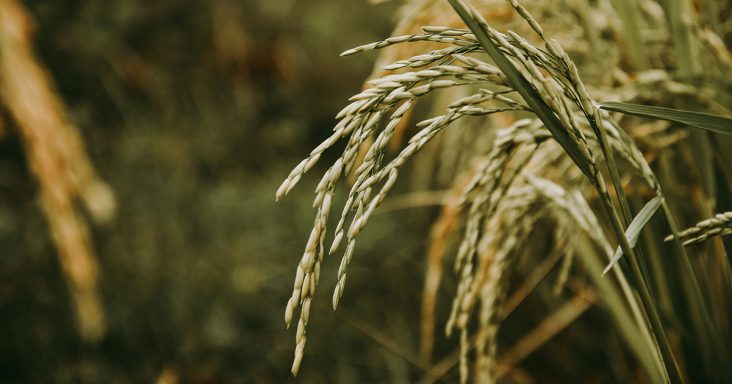Projected rice acres may convert to soybean acres in Arkansas this spring
by May 19, 2025 2:10 pm 821 views

The vast majority of Arkansas’ rice crop has been planted, but some of the acres that were projected for the crop may turn into soybean acres due to floods earlier this spring and subsequent rains since then.
About 86% of the projected rice crop was planted by mid-May, according to the National Agricultural Statistics Service’s Crop Progress report. That’s behind the 93% that was planted by this time last year, but well ahead of the five-year average of 78%.
At least 70% of the rice has emerged, down 10% from 2024, but ahead of the five-year average of 57%, said Jarrod Hardke, extension rice agronomist for the University of Arkansas System Division of Agriculture.
NASS’s Prospective Plantings report projected that Arkansas farmers planned to plant 1.461 million acres of rice, with 1.32 million of those acres in long grain rice. Medium grain rice acres moved up 20% to 140,000 acres.
Continued rains may drive rice acres down, however.
“It’s essentially raining our way right out of remaining rice progress,” Hardke said. “There absolutely are guys that are going to continue to plant rice whenever that opportunity comes around, even if it’s into the beginning of June.”
Farmers are reaching a decision point, and it’s the cutoff for prevented planting coverage.
Prevented planting coverage helps farmers in the event they are unable to plant an insured crop by the final planting date or during the late planting period due to an insured cause of loss.
When adverse weather prevents planting, a payment is made to compensate for costs incurred by farmers in preparation for planting the crop.
Hardke said with the parade of nuisance rains, input costs, and the challenges of cash flow, farmers will have to start penciling things out again — looking at their whole farm budget, figuring in continued low commodity prices and higher input costs, including fertilizer.
“Production costs were $100 an acre higher than they were in 2021,” he said. “But that’s a lie now, because in the last two weeks, urea prices have now soared.”
Hardke said with corn acres up across the United States, there has been an increase in nitrogen fertilizer demand.
“My understanding is most of the UAN — urea ammonium nitrate — fertilizer is gone,” he said. “Which means the fallback is to urea, which then means we’re now competing with the Midwest for urea.”
Hardke said farmers are asking themselves, “‘Do I keep trying to plant some of this or punt on all of it? Do I take a partial crop insurance payment and then plant something later which would be soybeans? Or do they decide to walk away and take the prevented planting insurance payment and not plant anything else?’”
For rice growers, the final planting date is May 25, with a 15-day late-planting period that ends June 9. Rice put in the ground during the late-planting period is still insurable, but at a reduced coverage level.
“Rice, or any insured crop, planted in the late planting period will have its guarantee reduced by 1% per day,” said Hunter Biram, extension economist for the Division of Agriculture.
If a farmer planted five days after the final planting date and had purchased a yield protection policy at 75%, the yield guarantee would fall to 70% of expected yield. Similarly, for revenue protection, the revenue guarantee would fall to 70% of expected revenue.
Biram said any crop planted beyond 15 days after the final planting date is uninsurable.
“At that point, assuming a farmer did not have the initial crop planted prior to the earliest planting date of April 1, the producer could still take a Prevented Planting payment,” he said. “They could also plant and insure a second crop.”
